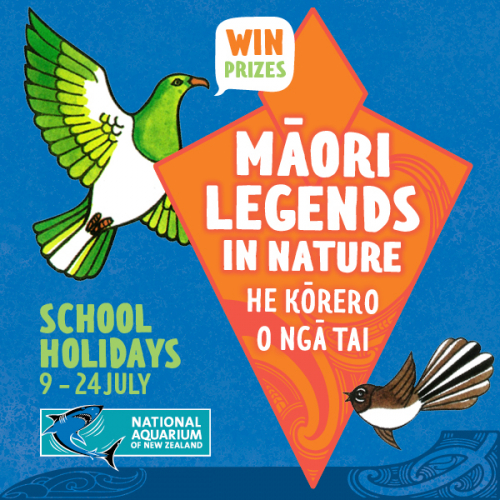
Explore Māori Legends in Nature / He Kōrero Ngā Tai these school holidays at the National Aquarium.
Be engrossed in beautiful narratives about nature and the atua (gods) that represent our world during your visit with some much-loved Aotearoa New Zealand classics on display.
Take part in our activity trail for a chance to win awesome prizes including books, soft toys and a National Aquarium of New Zealand annual family membership.
This unique way of experiencing classic stories as you journey through the aquarium runs 9 - 24 July.
Our storytellers will take you on an adventure through Aotearoa and time as you sit in front of our Pania Reef tank and listen to one of three classic Māori myths and legends throughout the schools holidays.
10.30am: The Fish of Māui written by Peter Gossage
12noon: The Legend of the Seven Whales written by Mere Whaanga
1.00pm: Pania of the Reef written by Peter Gossage
2 September 2022
Disclaimers and Copyright
While every endeavour has been taken by the National Aquarium of New Zealand to ensure that the information on this website is
accurate and up to date, National Aquarium of New Zealand shall not be liable for any loss suffered through the use, directly or indirectly, of information on this website. Information contained has been assembled in good faith.
Some of the information available in this site is from the New Zealand Public domain and supplied by relevant
government agencies. National Aquarium of New Zealand cannot accept any liability for its accuracy or content.
Portions of the information and material on this site, including data, pages, documents, online
graphics and images are protected by copyright, unless specifically notified to the contrary. Externally sourced
information or material is copyright to the respective provider.
© National Aquarium of New Zealand - www.nationalaquarium.co.nz / +64 6 834 1404 /